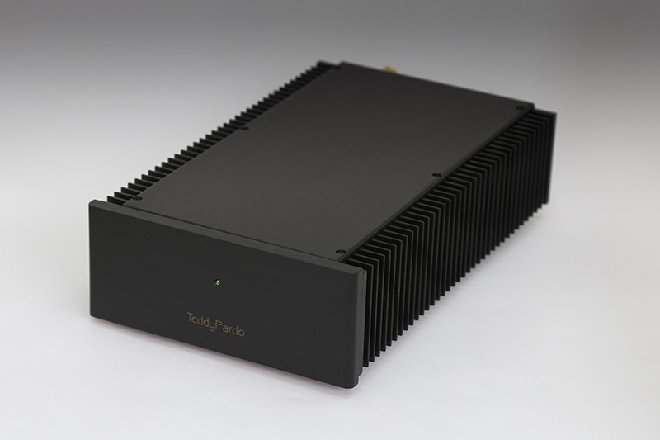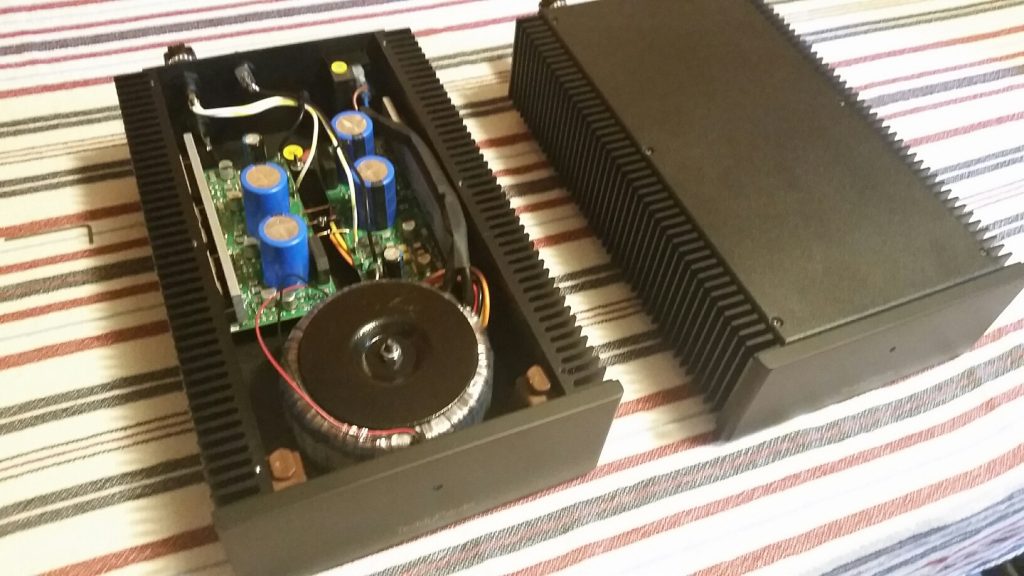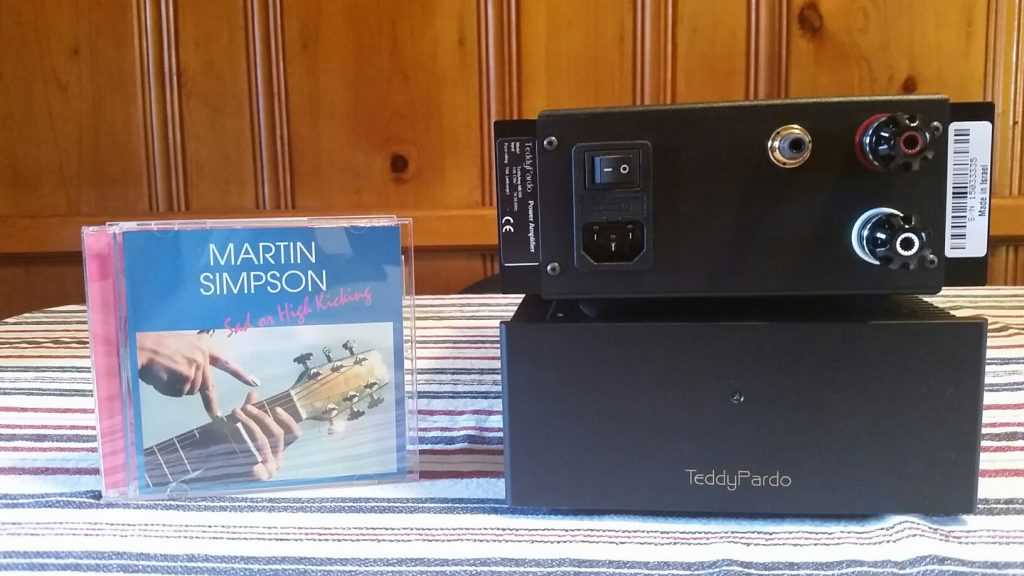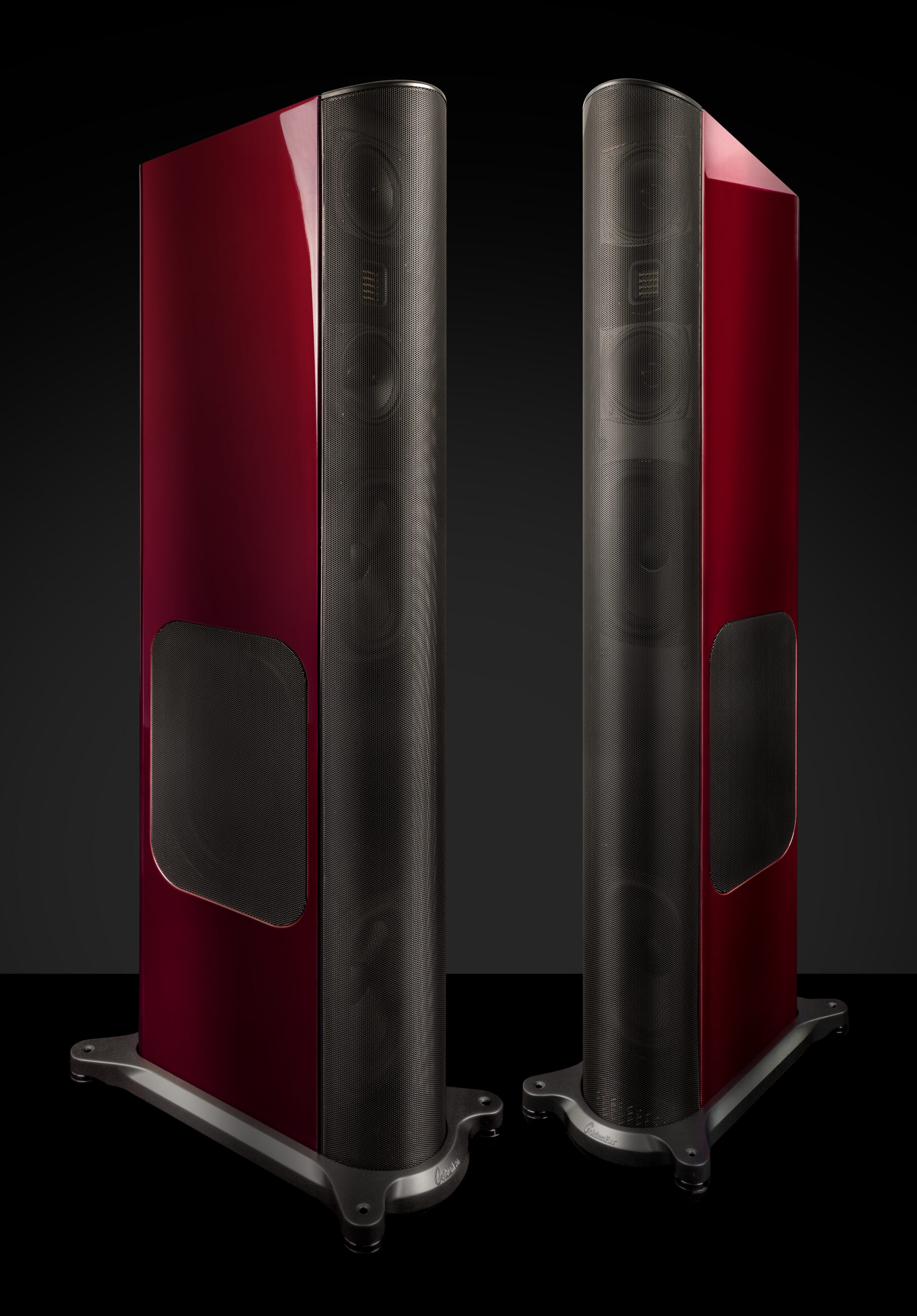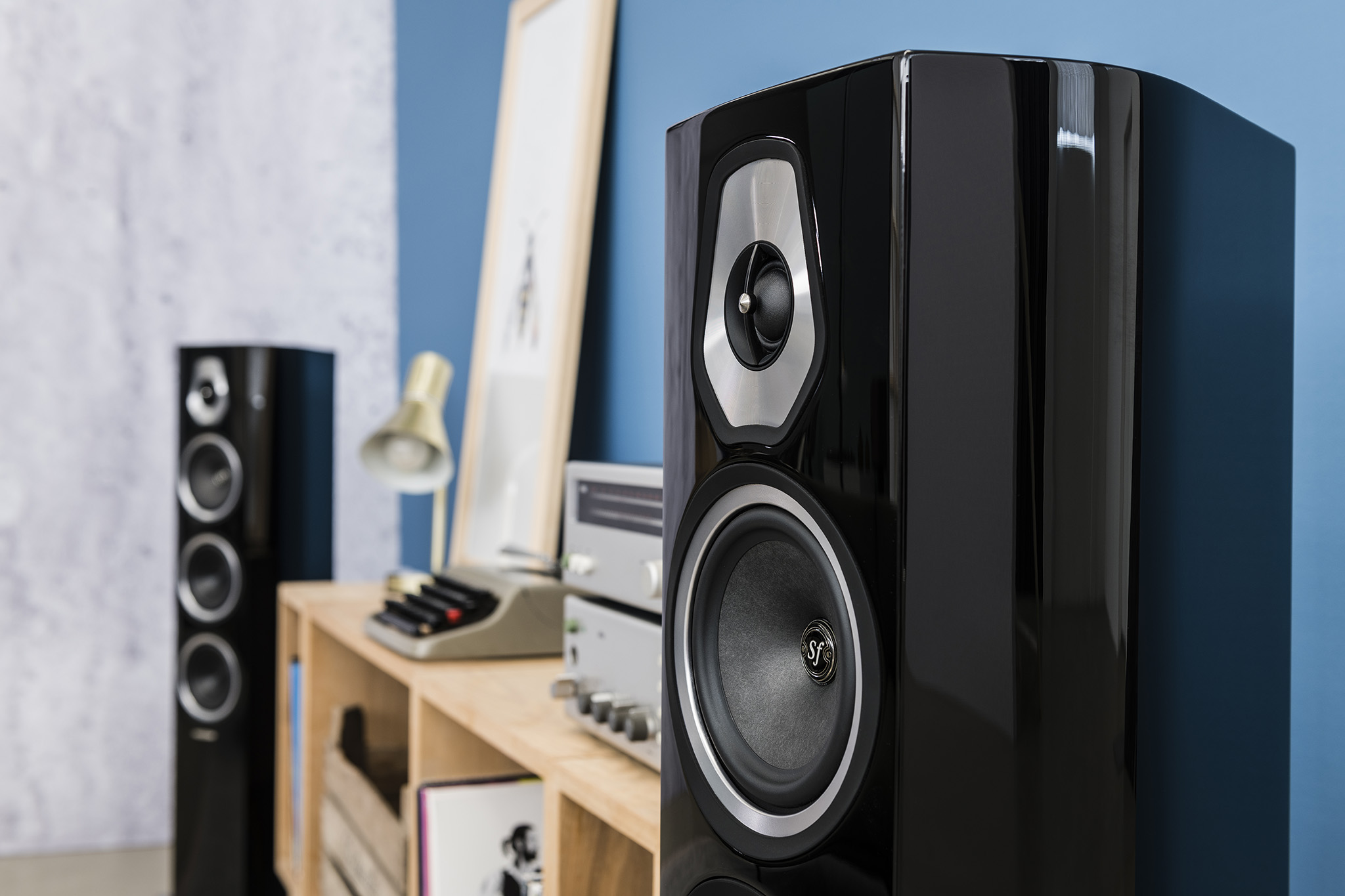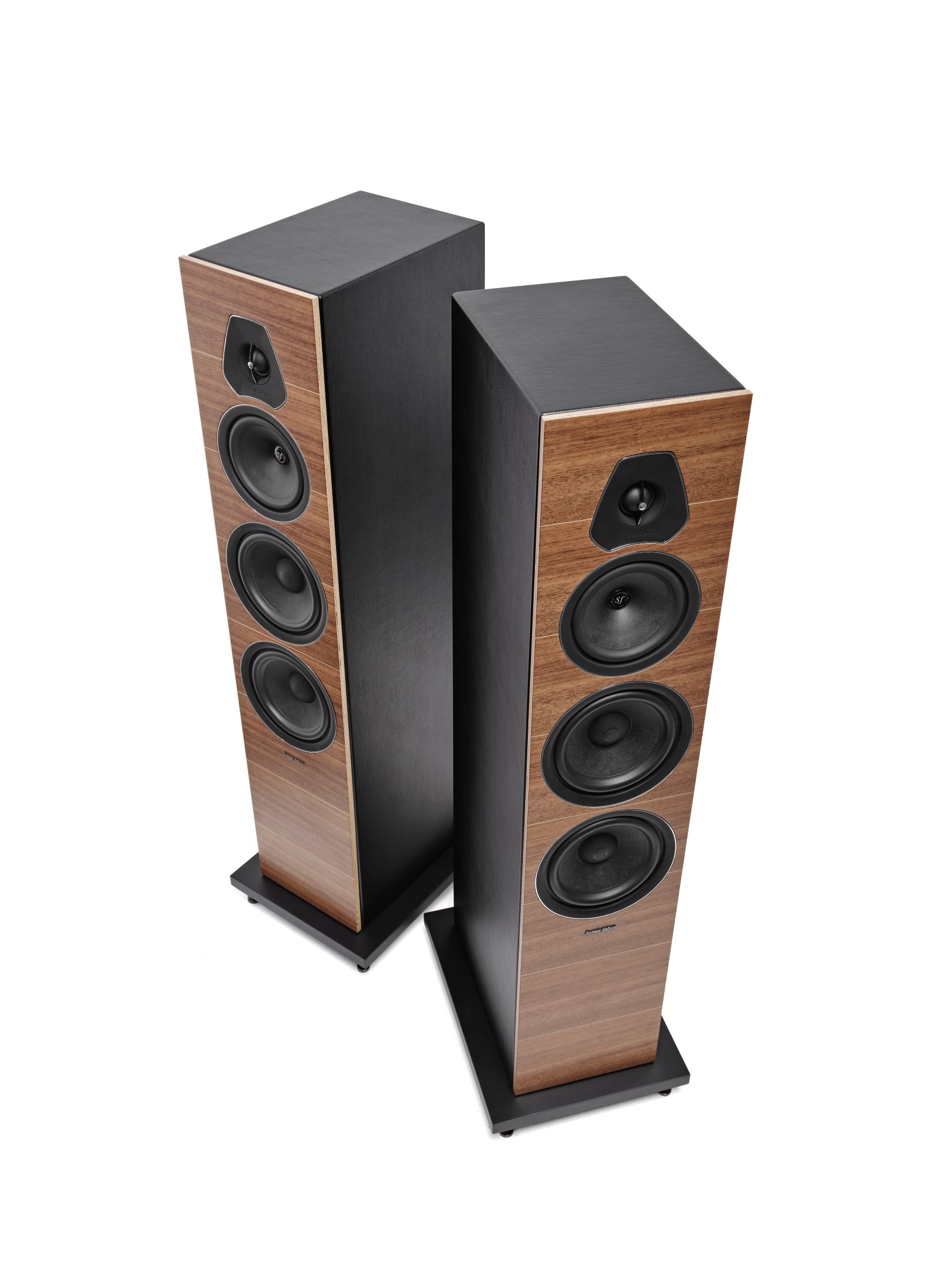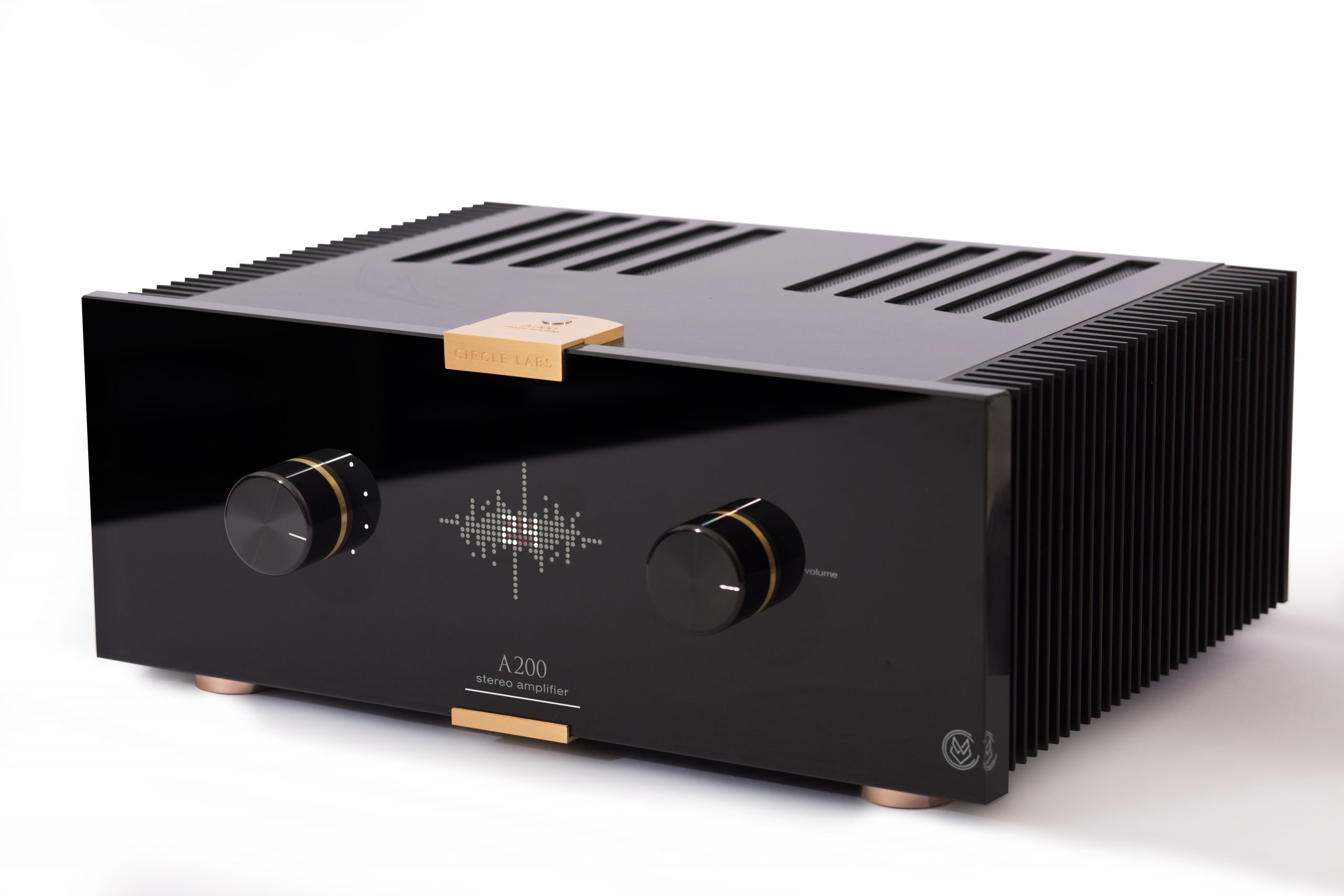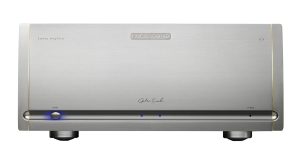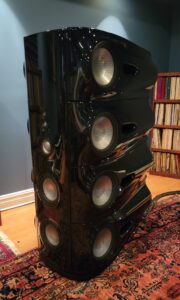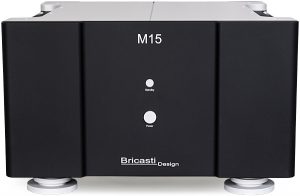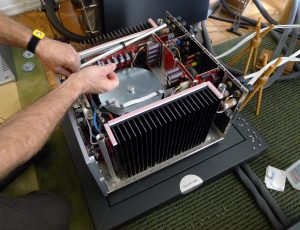The Israel-based company Teddy Pardo, which shares its founder's name, has accomplished quite a feat. It has birthed the Teddy Pardo MB100, a 100-watt monoblock amplifier amid a sea of competition in the $2500USD price bracket, with very compelling reasons to be considered. The foremost being a proprietary power supply that helps the MB100 deliver a low level of noise and high level of control that perhaps belie the amplifier's unpretentious industrial design.
Space and Amplifiers
1986 was not a good year for National Aeronautics and Space Administration (NASA). With the loss of the Challenger space shuttle and looming budget cuts, NASA needed a grand slam to re-ignite passion for the final frontier. That spark came in the form of the Hubble Space Telescope. Hoisting a telescope beyond our atmosphere and into the nothingness of space presented some technical challenges that had never been overcome before.
On a smaller scale, in Israel a young man named Teddy Pardo was moved to re-think what was possible in power-supply technology for Hi-Fi audio use. This motivation for Teddy Pardo began in the 1980's. The years passed and Teddy worked as a computer hardware and software engineer for start-ups, and in large firms such as Cisco and National Semiconductor. Despite becoming a Senior Engineering Manager, in 2008 Teddy decided it was time to turn to his passion full-time. By that time, Teddy already had established quite a presence in the do-it-yourself amplifier hobby, manufacturing and selling his power supplies, which were highly acclaimed by this community. Not unlike telescopes on the ground, amplifier technology is bounded by a handful of concepts which are all different means to achieve the same result. Like NASA's achievements with the Hubble, Teddy wasn't about to let this challenge dampen his pursuit of higher fidelity… and with his focus full-time, the results are spectacular.
At the heart of the Hubble space telescope is an eight-foot diameter mirror. This mirror has one job: Focus all the light (image information) on a single point, for the highest-resolution image possible. Unfortunately for NASA, the first time around, they missed the proper mirror-glass grind by about one-tenth of the width of a human hair. After the first images received were blurry, NASA needed to launch a mission to give the Hubble space telescope "eyeglasses" to correct its focus.
For sake of the MB100 monoblock amplifiers from Teddy Pardo, we will assume the Hubble space telescope had 20/20 vision from the start. The mirror in Hubble is not unlike the power supply of an amplifier. It needs to provide clean, focused, precise power to the signal to create the most awe-inspiring images it can. Teddy knew this from day one and the power supply is the key feature of the MB100 that will ultimately set it apart from many other amplifiers.
The MB100 uses a proprietary power supply that is a large version of Teddy's highly regarded, unique solution for noisy power supplies called the "SuperTeddyReg". The topography of this ultra-low noise circuit removes the need for large, high noise capacitors and regulators, effectively creating a background as black as space for the music to occur.
Upon plugging in the MB100s, the very first thing noticed is the total absence of noise from the speakers, even with the ear-to-tweeter test. This result is the exception to the rule; many car-priced amplifiers have some degree of noise when near the loudspeaker. That made this result a very exciting launching point for my listening.
The Craft
Pardo's unique power supply, which is neither switching (digital), nor linear, allows for a much smaller chassis. It is not quite as small as the switching type, but close. This gives the MB100 an understated look, with small, heavy-duty heat sinks running down the sides. The tape will show you these monoblocks are 3.5" high x 7.5" wide x 13.3" deep. Their heft will show you that despite the technology in the power supply, no corners were cut, with each mono amp weighing in at over 10lbs.
Teddy Pardo's website will tell you these amplifiers are capable of driving loads ranging from 2 ohms to 16 ohms; further the 100-watt power specification is understated. The power is delivered in class A/B operation via four amplifier pairs which were cool at idle and hot, but not uncomfortable to the touch, during long streaks of electronic music at unreasonable levels.
Greater detail comes in the form of ultra-premium parts such a 0.01% precision resistors, brand-name hook-ups, and high grade non-electrolytic capacitors. A large advantage for the owner because the MB100 will not have to be "re-capped" down the road due to failing components assuming this is a "buy-once, cry-once" purchase and will be kept for the better part of two decades.
The real advantage of these premium components, however, is ultimately better sound due to tighter tolerances, and better overall electrical performance. It may come as a disappointment that balanced inputs are not included on the MB100. According to Teddy, no one has ever asked for them, and from what Teddy hears, there is not anything missing.
One impressive note on communication with Teddy directly is his modest openness about his company's product. In inquiry of the input impedance his response was simply: "50kOhm, but it can be modified to any value, it is just a resistor at the input." This borderline encouragement to modify his product as one would see fit for their system or preference is rare. Many manufacturers would not reveal such information for the sake of good sound out of fear their brand may lose some "magic." Overall, it seems Teddy Pardo has been able to achieve such quality in the MB100 by keeping his company small but well-run, allowing for all of the advantages of a business, without all of the expense of a big business. Did I mention that they achieve all this in the MB100 for $2499/pr. USD?
What a load!
One big thing about outer space is its size. Space is an inconceivable vastness and depth, capable of holding everything the Hubble helps us find. The best output stages of the best amplifiers can only shine if the power supply contains a similar amount of depth and vastness. During listening tests, the MB100s clearly have the power when it is needed. The sense of effortless drive is extremely impressive as tested on two different pairs of loudspeakers. One load is a fairly easy 3-way loudspeaker; the other a more complex 2.5 way loudspeaker.
What is a load? It is not "8 ohms nominal" because a loudspeaker has ever-changing electrical impedance. Impedance, or the load an amplifier will see (this is just a simple way to look at it), is the loudspeaker's demand for current at any given frequency. A single number cannot be assigned to it, yet many manufacturers boil this down to a single rating such as "8 Ohms" or "8 Ohm nominal". Loudspeaker impedance cannot be represented by a single number, since it represents a point along an alternating current (AC) of changing frequency. What is typically seen is the magnitude, measured in Ohms. In short: The lower the number, the more current the amplifier will be called upon to deliver. A typical "8 Ohm" loudspeaker may have a range from 3 ohms or less, all the way up to 100 ohms or more, along the frequency spectrum measured, which is usually 20Hz to 20Khz (from the bottom frequency of what we can hear, to the top frequency we can hear).
The electrical phase, which is the second part of impedance, and not often published, tells just how reactive a load is. A positive phase means the load looks more like a capacitor where the current is leading the voltage, and a negative phase looks more like an inductor where the current is lagging behind the voltage. Ideally the phase would always be "0". That would mean the load look like a simple resistor, and the current and voltage are delivered together. Heavily reactive loads, both inductive and capacitive, can present trouble for some amps, creating high current demands—even if the magnitude (Ohms) is not very low. Competent amplifier designers take into account and plan for their finicky loudspeaker companions in advance by implementing a power supply and amplifier section capable of handling heavy loads. The MB100s seemed to be up to the challenge of any loudspeaker with effortless dynamics, and a stable, revealing soundstage.
The graph below is an example of a loudspeaker which may present a heavy load to an amplifier. The areas circled in red show either low magnitude (Ohms), extreme phase, or both. The "both" case is the "perfect storm" for current demand from an amplifier. Please note this does not make the loudspeaker "bad." This graph is typical of large loudspeakers with multiple drivers, and further note that I did not use this loudspeaker in the evaluation of the MB 100s.
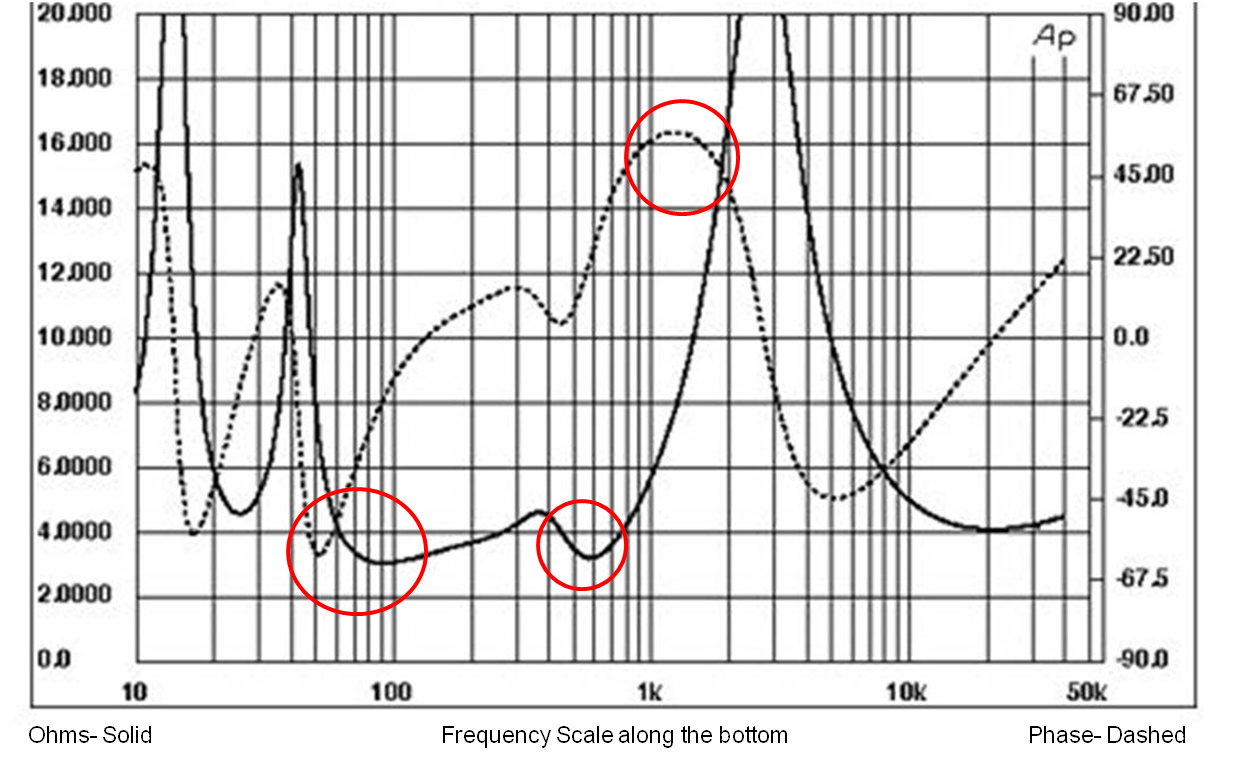
The first circle denotes the impedance is 5.8 Ohms with a -60 degree phase at 50Hz,dropping to 3 Ohms at roughly 85Hz, although the phase is somewhat more manageable. Bass frequencies usually require most of the power from an amplifier. On top of that, this loudspeaker presents a tough load for the amp right in the range where a vast majority of bass occurs. The other two circles are less important, but these loads can increase distortion if the amplifier is not up to the task.
We will return to our regularly-scheduled review now. The importance of this technical lesson will prove useful to understand my high level of appreciation for Teddy Pardo's work in the MB100s. When the music emerges from the loudspeakers there is never a time when they sound less than controlled by the MB100s. While reading on, please do not forget that these amplifiers are an unassuming 100 watts, are monoblocks, and priced where someone with a modest budget could own a pair.
Rounding out the Hardware
Setup of the MB100 is straightforward. Plug in your RCA cable, speakers, power cords, and turn the amplifiers on. The manual says so. Starting from the front, a Jaton Operetta CD1000B is acting as a transport into a Bricasti Design M1 DAC. An Esperanto Audio "Blue" SPDIF cable handles the chit-chat between the two. Once the M1 performs its magic on the signal, the analog line-level is passed through MIT 330 series II interconnects. The MB100s get a hold of the signal and pass it through Audioquest Type 4 speaker cables which deliver the final product to the loudspeakers.
The loudspeakers are designed and built by the author. One pair utilizes ultra low-distortion drivers from world class manufacturers Seas out of Norway, and Eton out of Germany. These are finished on the top end by a highly sophisticated thin-element, waveguide loaded ribbon tweeter called the Viawave from Russia. This 8" woofer 3-way design was built with the intention of world-class performance in small to moderate rooms. The second pair of loudspeakers utilize two HIVI Research D5 woofers and the famed Hiqphon OW1 tweeter in a 2.5 way configuration. This pair maximizes in-room power response without sacrificing bass performance.
For reference, the MB100s will be directly compared to a well-established and respected amplifier designed by the legendary amplifier specialist Jon Curl: The Parasound A21 Halo. Since the A21 Halo carries the same USD price point (well, $5 cheaper at $2495), touts more than twice the power, THX certification, balanced inputs, level control, a high-bias design offering the first 15-20 watts in class A, along with a continuing list of other great features, the MB100s truly have a giant to contend with.
But Not Really David and Goliath
The MB100s vs. the A21 is not a David and Goliath story. Everyone loves a good underdog, but let's not forget that both of these amplifiers are in the same price tier. This set the expectations high, but the results were not disappointing. Aside from general listening to all sorts of music, three tracks were used to flesh out the goings on between the MB100s and the A21. Both pairs of loudspeakers were used for the evaluation. Aside from being different loudspeakers in design and purpose, the MB100s drove each effortlessly. On to the music…
Jean Sibelius (1865-1957) was a Finnish composer whose work is far-reaching. To many he is credited with helping Finland find its own identity while escaping the grasp of Russia. Sibelius feverishly composed many operas, piano pieces, chamber and choral works, but he is most well known for his symphonies. David Stanhope, an Australian conductor/composer and a talented pianist took one of Sibelius' art songs called "The Tryst" originally written for orchestra and female high voice (soprano), and re-wrote it for solo piano. Stanhope performs this composition on the CD A Virtuoso Recital and it is a personal favorite. "The Tryst" is a dynamic rampart of emotional power that, despite its three-minute run time, feels like it is over in seconds.
If it is not evident yet, this selection truly taxes a system in many ways. Both amplifiers did a wonderful job at a level which gave the feeling of standing next to the grand piano. There may have been a bit more information between each note with the MB100s. The MB100s did start to give the impression they may have been running out of headroom. There was no apparent audible distortion, rather a thinning of the bottom and top not unlike that of slightly squinting your eyes to make clear a picture in sunlight. The A21 felt like it was just starting to enjoy itself. Mind you this result is fully expected with an amplifier that is more than twice the rated power of the MB100 and a testament to the MB100's conservative power rating of "only" 100 watts. In short, the MB100 can hang with the "big boys" when reproducing extremely demanding music with complex harmonic structure, even if it is panting to keep up.
A long-time favorite of mine has been Peter Gabriel. In 1992 Gabriel released Us, which was a very reflective album for the now famous solo artist. It may even be plausible this is when he went from pop-star to artist. The next track is off Us, titled "Washing of the Water". As always, this track contains a surprising amount of eclectic instruments, percussion, and Peter's haunting vocals. It is a surprisingly dynamic track with a beautiful climax which features a horn ensemble throwing this song of borderline desperation straight into the heart. This is where the MB100s started to really separate from the A21. One thing Peter Gabriel is famous for is the use of space between the notes in the music. The MB100s capitalized on this like few amps experienced before. This effect made every contrasting note seem placed in time and space as it has always been there with beautiful timbral balance, and effortless drive. The sound of the MB100 was not euphonic, sweet, or smoothed over as would be expected, rather they resolved extremely minute details without being etched. The separation between the horns was world-class, with dynamics to match. While the A21 may have possessed slightly more in terms of dynamic capability and forwardness of information, it seemed to lack homogeneity of the MB100s. This track was auditioned at comfortable listening levels.
The Fisk organ company's Opus 100 is a monster of a pipe organ, consisting of over 4500 pipes. It has 66 voices in 84 ranks which the organist has to make sense of via four manuals (keyboards) and a set of foot pedals. Those foot pedals control (among other things) a complete set of 32' pipes that play deep sub-fundamental bass. (That is, below the 32Hz C = 0 that is the lowest pedal on the pedalboard.) Add the players of the Dallas Wind Symphony to the mix, make a playlist of extremely powerful classical works, let Reference Recordings put them on record, and the result is music so powerful many audio systems cannot even attempt to capture the full scale of the sound in dynamics and image size.
Pomp & Pipes! has become a favorite when I test the limits of any system, and it is one of the few such recordings where the audio excellence is matched by the musical performance. "Lord Save Thy People" is a dynamic journey of proudly righteous music complete with a snare march and a gigantic plagal cadence, before letting the listener enjoy the reverberation signature of the Meyerson Symphony Center in Dallas, TX.
The distinction between the two amplifiers was more apparent here, but not as one may think. They both drove the larger of the loudspeakers to the mechanical limits of the woofers which is powerful enough to heavily compress the room under the immense depth of the pipe organ. The A21 did this in whole with more control on the lowest of notes. The MB100s, however, had better apparent separation between everything in space. They also appeared to have more dynamic energy in the snare drum which was surprising. To be specific, this occurred in the feel of the body of the drum as an instrument. It was shocking how similar in timbre both amplifiers are. The MB100s never appeared to run out of drive, though they may have not liked to be pushed much farther. I say this with a sense of ambivalence since dynamic range and drive are, in any form of the matter, not a short-fall of the MB100s.
While the MB100s may not be able to be future-ready for giant loudspeakers that can produce Pomp & Pipes! at full orchestral levels, they are likely more than enough for any system putting fidelity first, and for most would be enough amplifier to not desire another. The MB100s will drive just about any type of music to powerful levels with world-class low distortion. For reference, the A21 is a highly decorated, legacy product for Parasound and has been compared with amplifiers costing as much as one's first automobile. Teddy Pardo has created a set of unassuming monoblocks that easily deliver 80% of the overall performance, and 100% in terms of low noise, separation, inner detail, and inner dynamics. Well done! The A21 will not be leaving the system anytime soon; however it is regrettable the Teddy Pardo MB100s will. All things equal, the choice would be to purchase a bigger equipment rack and have both!
Two Final Musical Journeys
There are many planets in our solar system and comparing the beauty of two of them is wonderful. However, with the Hubble we have been able to capture vivid, solo images of our cosmic neighbors in ways which highlight amazing details. Here are a couple of albums that showcased the MB100s, as they stand alone. It is difficult selecting only two albums to capture the scope of the MB100s since it became habit to listen too long, and lose track of time.In 2002 the grunge era of rock hit maturity, and many offshoots of grunge emerged. One specific music type that was around but not really popularized at this time was "Industrial Rock." No single artist was more influential than Trent Reznor, founder of Nine Inch Nails (NiN). After much success, Reznor released a 2CD set called Quiet/Still. (Still was also available on its own.) Still contained softer, more melodic versions of popular NiN songs though the years. There are no shredding guitars. No ear-curdling pain. There is just music. Well-composed music with an eclectic blend of synthesizers, many different percussion streams, and extremely well produced recording techniques which for many established Trent Reznor and NiN as serious artistic and musical forces.
Right from the first note of Still it was evident the MB100s would raise hairs. The six minute, thirty-nine second "Something I Can Never Have" consists simply of Reznor on vocals and piano with little else save a soft, eerie acoustic guitar. The piano simply floated in the blackness of the MB100s, and the guitar was resolved with a "guitar pick, then string note" feel to every sound that placed it exactly where it should be. This is while the piano dances with changing left-hand dynamics that the MB100s handled flawlessly. Throughout the song, the dynamics change drastically and as Reznor's voice fills the small room used for the recording, and his voice echoing off the walls gives the impression he is in the listening room. There was no single time when there was anything but the music appealing to a feeling of breathlessness during the quiet passages and raised hairs through the dynamic, climatic finale. The feeling that is left is in confederacy with Reznor who simply states: "I just want something….I can never have". It is remarkably impressive, given their size and price, that the MB100s can paint such a soundscape that the listener is truly left with just the music.
More complex is one of NiN's more underground hits "The day the whole world went away". This track, too, is a musically emotional journey however the story is told more by the instruments than the small segment of vocals. To do so an amplifier has to be able to resolve inner details, subtle and macro information through all passages, and control the loudspeakers to assure it reaches the listener. The MB100s were strong, and as originally found in "Something I can never have" delivered the message without missing anything. As the final passage begins to build, there is a muted bass with background percussion punctuated by a snare drum hit which dominates every 2nd and 4th beat through the conclusion. Every dynamic pitch, decay, and nuance is resolved in the MB100s. This track was repeated several times since like a perfect drug, it kept this listener wanting more. The whole album was a journey which was enjoyed in a new fashion thanks to the MB100s.
Martin Simpson is an English Folk singer/songwriter. His music pulls in influences from Britain, Ireland, America, and other traditional sounds to create magical journeys through song. His 1985 release Sad or High Kicking highlights his incredible stylistic art and complexity through a mix of original and borrowed work. Simpson's guitar playing is some of the most engaging work I have enjoyed where he attains the feeling of speaking through the instrument as if it were his own voice. This is important, since folk music is born from turbulent times and can tell tales of the extremes. In whole, the MB100s are right in their zone with this music. They unravel complex harmonies, capture subtle dynamic changes, and provide a high contrast soundstage against a black background. They deliver everything from the fretless bass in "Moth" to the horns in "No Depression in Heaven" with a continuity that just makes one listen.
One track, in particular, was deeply moving on the MB100s. "Stillness in Company" is a simply beautiful lyric where a gentleman is romantically pleading to a woman to simply be his company. It was the stillness Simpson created between each note, and the waltzing melody that produced the feeling of a young heart in love. This would not be the case unless the system, which includes the MB100s, could create the silence and all that emerges from it with so little flaw that the all that is left is the music. This was similar to the experience with the Peter Gabriel track as above.
Conclusion
The Teddy Pardo MB100 monoblock amplifiers are nothing short of an amazing value. They deliver music with the drive and capability of a much more expensive, larger, and powerful amplifier. The MB100 is not just another product in the fray; rather they are the result of a life's work in electronics and power supply design.
In any average living or dedicated listening space, with loudspeakers of any load short of the largest and most extreme, the MB100 should deliver years of listening enjoyment. I say "years", simply because there are better amplifiers than the MB100. However to acquire that incremental improvement, one might have to spend double (if not more) the price of a pair of MB100s. If $2499/pr. is your budget for an amplifier, chances are that an incremental increase in fidelity is not worth the 100% increase in cost.
It has been a real joy listening to the Teddy Pardo MB100s; it will be a real heartbreak to package them up and ship them out.
MB100 amplifier
Retail: $2499/pr.
Teddy Pardo




